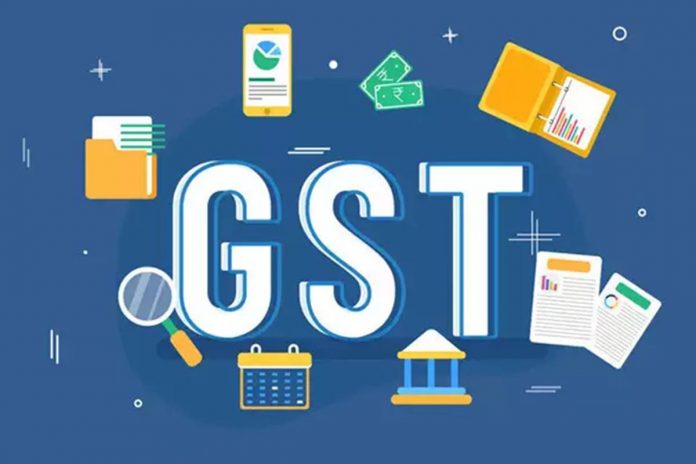This article has been written by Ankit Mondal pursuing the Diploma in Law Firm Practice: Research, Drafting, Briefing and Client Management from LawSikho. This article has been edited by Kritika Sharma (Associate, Lawsikho) and Smriti Katiyar (Associate, Lawsikho).
Table of Contents
Introduction
From the concept of dabbawalas to modern online food services like Swiggy, Zomato, and Uber-eats, India has seen different phases of the food delivery system and evolution. Nowadays, food delivery services are booming all across the globe. According to Forbes, this industry will generate $365 billion in revenue by the end of 2030. As per the various statistical reports, the valuation of the Indian online food delivery service may reach $1.3 billion (approximately) by the end of 2021. It is also projected that the sector will grow to $3 billion (approximately) by 2025. This booming market condition attracts not only domestic investors but also attracts foreign investors as well. Not only Swiggy or Zomato, but the new start-ups like freshmen, faasos etc. are also attracting global investors to invest in them. Although it seems that these platforms are enjoying their biggest boost of all time, the latest GST implications have put stress on these sectors.
Background
Beginning January 1st, 2021, the government will levy a 5% GST on online food delivery services, according to the notice and setup laid out by the GST council.
This decision creates buzz around the country and has divided the experts of the country in two factions. This decision heated up the prices of the food delivery items. Because the collection of revenue is in the hands of restaurants, some big names are charging high prices in the name of these, while small or medium-scale restaurants are involved in negotiations regarding commission with these platforms. This setup made these platforms burn out extra capital to stabilize the market and hold onto their customer base. After the 45th GST general council meeting, it seems like they almost stabilized the market. Then the government blasted another bomb.
What is the latest implication?
On September 17th, 2021, the GST Council of India held their 45th GST Council meeting in Lucknow. After that meeting, the finance ministry issued new GST implications, and one of them was that from now onwards, online food delivery services will collect and deposit the 5 per cent GST instead of restaurants.
What is the motive behind this move?
While issuing this direction, the Finance Minister, Nirmala Sitaraman, explains the main motive behind this step is to stop the leakage of GST revenue. Because, under the current system, many restaurants evaded paying GST on food deliveries. Although large restaurants and food chains easily submit this 5%, small restaurants, particularly those with a turnover of less than 20 lakhs, have difficulty, fail, or deny this percentage. As a result, the GST council has directed food delivery platforms such as Swiggy and Zomato to collect the 5% GST rather than restaurants.
In comparison to the current setup, do these new directions impact or increase the price of the food when using online delivery services as a customer?
No, there will be no impact on the price of the food when using online delivery services as a customer because there will be no new taxes introduced in this meeting. The only change that has taken place is that, prior to this, 5 percent of the order was collected by the restaurants while ordering through food delivery services. Now that 5 percent will be collected by the online food delivery services. Thus, you, as a customer, don’t need to panic. The price of the food will remain the same as per the current setup. The GST council is making only structural changes. The same has been explained by the Revenue Secretary, Tarun Bajaj, while interacting and explaining the new GST collection model.
What will be the impact of this decision on online food delivery services?
Although there will be no impact visible on the customer’s end, many experts argue that this decision may have a drastic impact on the supply-chain and financing models of these online food delivery services. Here’s why:
- Excessive burnout:
Since implementing a 5% GST on online food delivery services on January 1, 2021, online food delivery services have seen some decline in their thriving market.
Initially, the people, especially those from the middle class or those from tier 2 cities where the expenditure power is not so high, feel the heat from the food prices. Which ultimately causes burnouts in the financial management of these food delivery services.
- Increase the burdens placed on these platforms:
In the current setup, restaurants are required to keep up an updated separate book of accounts; one is for the normal business they run and a separate one for these kinds of online food delivery services. From now, onwards, this burden will also lie with these platforms like Swiggy and Zomato, where they will be liable for the collection of the said GST. That will definitely increase the burden on these online food delivery services.
- Increase Burdens on small scale restaurants:
Many tax experts believe that the long-term impact of these decisions will be favourable for smaller restaurants, particularly those with annual revenues of less than Rs. 20 lakhs. Because they are not eligible and also not included in the GST net before. This new decision will also make them pay taxes with the aggregators, even if they weren’t included in the net GST before. These not only place additional burdens on small-scale restaurants, but also have an impact on the online food delivery ecosystems.
- Denials or misunderstandings about collection from small restaurants:
The big restaurants included in net GST before will not face any problems with these decisions, and the aggregator will also easily collect the taxes from them. But when it comes to small restaurants, the aggregators may face some trouble as there is confusion regarding paying taxes. Although they are not included in the GST bracket, after these decisions, they might need to pay the taxes, and this confusion may lead to confusion, denial, or trouble collecting the taxes from them.
- Too much ambiguity regarding the input tax credit: The input tax credit is a critical component of the current GST system.
However, these new directions issued by the GST council are creating too much confusion in the applicability of the input tax credits. Especially regarding the small-scale restaurants that cater to the food services companies are already seeking clarification from the government.
- Impact on supply chain management:
Following the 5%, GST implementation on online food delivery services in January 2021, food delivery platforms have faced a significant impact on their supply chain system.
They have seen the declining graph for a while. After a few changes, they stabilized their market. But again, this new decision, which needs a structural change, may impact their supply-chain system for some time in the near future.
- Financial structure impact:
The previous setup, which occurred on January 21,2021, already had a significant impact on the financial structure of these types of companies.
They were pushed to burn out their capital and exciting finances to hold onto the customer base. As they must introduce more enticing offers to customers in order to attract them to order from them and maintain the ecosystem. They almost stabilised the market, and in the meantime, the GST council again shocked them. Thus, these new directions which mandate structural changes may affect the financial condition of these companies.
- Increased conflict between restaurants and online food delivery services:
It is a well-known fact that there is already a huge conflict between these online food delivery services and restaurants regarding pricing and profit-sharing policies. Both parties often give statements against each other in open forums. Some experts suggest that these new directions may work as a spark to light up a fire between both parties. Because there is some confusion regarding how the aggregators will collect the taxes. And if any wrong steps are taken in the future based in this direction, it may end with a fire in this sector.
- The effect on delivery service executives
There are plenty of reports published in the last few years about how these online food delivery services treat their delivery service executives. They are often treated like slaves and paid very little compared to the global standard. Now that these new directions may cost the company extra cash burnouts, the company may reduce expenditure on delivery service executives to balance it out. Ultimately this costs those delivery service executives.
Positive impacts
Although some cons and concerns have arisen due to this new direction, there are some positive impacts of this direction in the long and short term.
Here are as follows:
- Stop Revenue Leakage:
In the previous setup, there were some loopholes resulting in revenue leakage to the government. Now, with this new direction or setup, there is a much lower chance of revenue leakages.
- Increase transparency:
In the current setup, there was always some concern about transparency regarding the collection and submission of levied taxes due to some loopholes; , there is no such concern in the current setup. With this new direction, experts believe that transparency will be on the rise in the near future.
- Increase Revenue:
Sealing the leaks and increasing transparency in the system will result in an increase in the amount of revenue collected.
- Reasonable taxation:
Small restaurants are generally exempt from the net GST bracket for ordinary businesses, but when they do business through these online platforms, the customer is required to pay the GST to these small restaurants at par with the current setup. These restaurants won’t show them and keep them to themselves. In this new direction and transparency, these systems won’t, and the tax revenue will go to the government treasury, not any business owner.
- Improve compliance with online food delivery services:
New changes impose extra compliance on these online food delivery services regarding the collection of revenue, and that will add an extra layer of protection from revenue leakage.
Conclusion
There is a debate, and experts are divided into two regarding imposing GST on online food delivery services. On the one hand, many experts believe that these steps would have a positive impact in terms of the collection of revenue and would create proper authority for liability or compliance. On the other hand, many experts believe that this direction will ultimately heat up the prices even for the cloud kitchen services, which would create turmoil in this booming sector. However, in the current situation, it is entirely up to those companies to implement these guidelines to balance both sides.
References
- https://www.google.com/amp/s/www.bloombergquint.com/amp/business/impact-of-new-gst-burden-on-e-commerce-operators-zomato-swiggy-ola-uber.
- https://www.google.com/amp/s/indianexpress.com/article/explained/gst-food-delivery-apps-zomato-swiggy-restaurants-7517040/lite/.
- https://www.google.com/amp/s/www.indiatoday.in/amp/business/story/zomato-swiggy-online-food-delivery-apps-gst-tax-1854187-2021-09-18.
- https://www.google.com/amp/s/wap.business-standard.com/article-amp/companies/from-swiggy-to-foodpanda-online-food-delivery-service-firms-face-gst-heat-118061800015_1.html.
- https://www.google.com/amp/s/timesnext.com/new-gst-rule-for-food-aggregators-zomato-swiggy/%3famp.
Students of Lawsikho courses regularly produce writing assignments and work on practical exercises as a part of their coursework and develop themselves in real-life practical skills.
LawSikho has created a telegram group for exchanging legal knowledge, referrals, and various opportunities. You can click on this link and join:https://t.me/joinchat/J_0YrBa4IBSHdpuTfQO_sA
Follow us on Instagram and subscribe to our YouTube channel for more amazing legal content.
 Serato DJ Crack 2025Serato DJ PRO Crack
Serato DJ Crack 2025Serato DJ PRO Crack











 Allow notifications
Allow notifications



